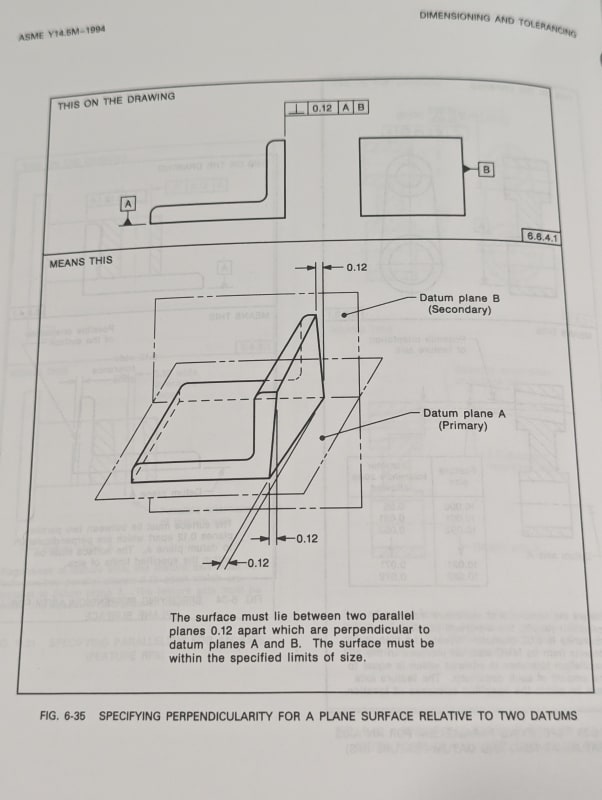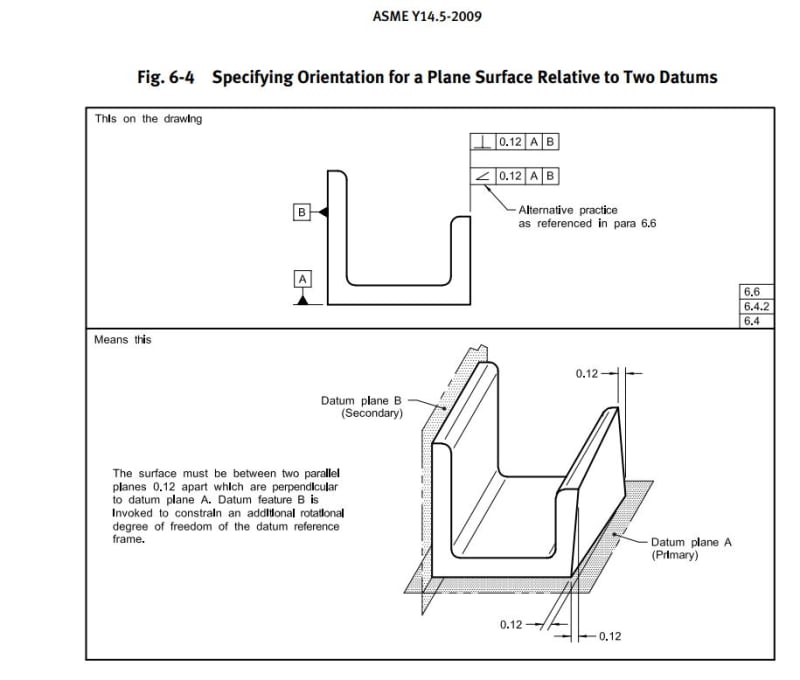random_guy
Mechanical
Y14.5-1994 shows perpendicularity to two datums, which I've always used (Fig 6-35, p.182).
Y14.5-2009 and 2018 show perpendicularity to two datums but add an angularity constraint to A|B (Fig 6-4, p.101). I believe the intent is the same, but the addition of the angularity FCF is just confusing in my opinion.
Any reason not to only use perpendicularity, and not angularity?


Wise men learn more from fools, than fools do from the wise.
Y14.5-2009 and 2018 show perpendicularity to two datums but add an angularity constraint to A|B (Fig 6-4, p.101). I believe the intent is the same, but the addition of the angularity FCF is just confusing in my opinion.
Any reason not to only use perpendicularity, and not angularity?


Wise men learn more from fools, than fools do from the wise.
